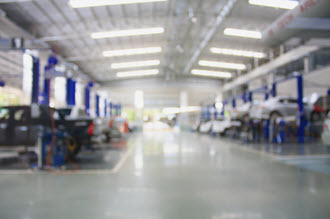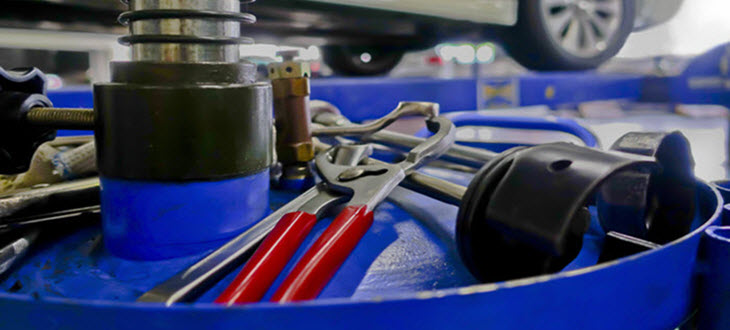Whether you’re opening a new shop for business or you’re looking for a new one to take your business, it’s important to know the essential pieces of equipment that a proper automotive shop should have no matter what. Regardless of if it’s a new piece of equipment that other shops don’t have yet or dealer quality diagnostic tools that ensure your vehicle gets the care and attention it would at the certified dealers, having the right tools can mean the difference between having a trustworthy mechanic and continuing the search for one. Look for these diagnostic tools to be present in your shop the next time you go or it may be time to start looking for a new shop for your vehicle.
- OBD2 Code Reader– Possibly the most important tool in any automotive shop, this will read and diagnose the engine’s computer to determine any issues and why the check engine light may be on. It will give you the corresponding potential error code or codes and help you narrow the possible causes of the light being on so you can begin planning repairs. This works in most models and makes of vehicle from about 1997 on, other than luxury vehicles like BMW, Mercedes Benz and Jaguar which require their own code readers to diagnose potential engine issues. For a serious shop to do trustworthy diagnostic testing and engine repair, an OBD2 Reader is by far one of the most essential tools they can have on hand in the shop.
- Proper Lifting Equipment– This should include floor jacks, transmission jacks, jack stands and axle jacks. With so much work being performed in hard to reach places under the vehicle, having the proper equipment to make looking under the car easier if your shop doesn’t have a pit to make looking or working under the vehicle easier.
- Wheel Service Equipment– Since a large portion of car owners have various wheel and tire issues, having the proper tools to make repairing them a fast and easy process are essential, especially to a shop with a high volume of work. An automated tire changer will help reduce the time it takes to change a tire and is usually controlled by foot pedals and this will reduce labor even further. The tire changer will remove the tire while it moves around the machines turntable and will check to see how damaged the tire is. If it’s not repairable then a new tire will be fitted to the wheel by the tire changer or if it can be repaired, the same process will be repeated and then the tire will be fitted back onto the car. A wheel balancer will also help to detect and fix issues where the tires have been worn out unevenly. Most models use digital sensors to detect imbalances and once one is detected it will work to realign the wheels that are affected by the imbalance.
- Work Lights– This may seem simple but having proper lighting is essential, especially if your shop has limited lighting available. Bright, fluorescent work lights will give off less heat than full lighting systems and can be easily transported. This will help you see under the hood more clearly and to be able to properly diagnose issues the first time.
- Hand Tools– Believe it or not, even with tons of expensive and cutting-edge diagnostic tools at their disposal, most mechanics swear by particular hand tools that help make their job easier. Sometimes nothing beats the classic tools that have been used for decades so most automotive shops should have a collection of hand tools that will help them when it comes to diagnosing your vehicle by hand and without the aid of diagnostic technology.
Conclusion
If you’re starting your own automotive shop, this  can sound like a pretty expensive shopping list but think of it more as an investment for your future. Your shop will thrive when word gets out about the quality of the diagnostic equipment that allows prompt repairs to be performed. As for drivers looking to find out why their car is suddenly making a weird sound or has the check engine light on, finding an automotive shop with these tools is a great way to trust that you’ll be leaving your vehicle in qualified and professional hands.
can sound like a pretty expensive shopping list but think of it more as an investment for your future. Your shop will thrive when word gets out about the quality of the diagnostic equipment that allows prompt repairs to be performed. As for drivers looking to find out why their car is suddenly making a weird sound or has the check engine light on, finding an automotive shop with these tools is a great way to trust that you’ll be leaving your vehicle in qualified and professional hands.

